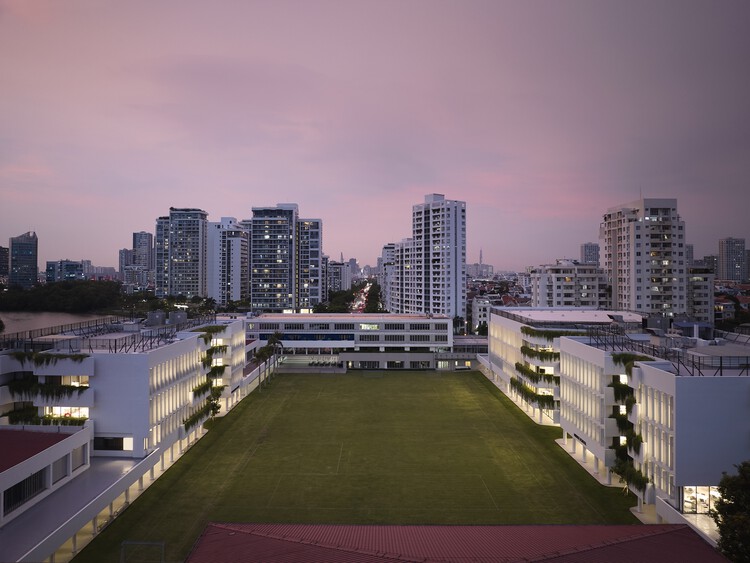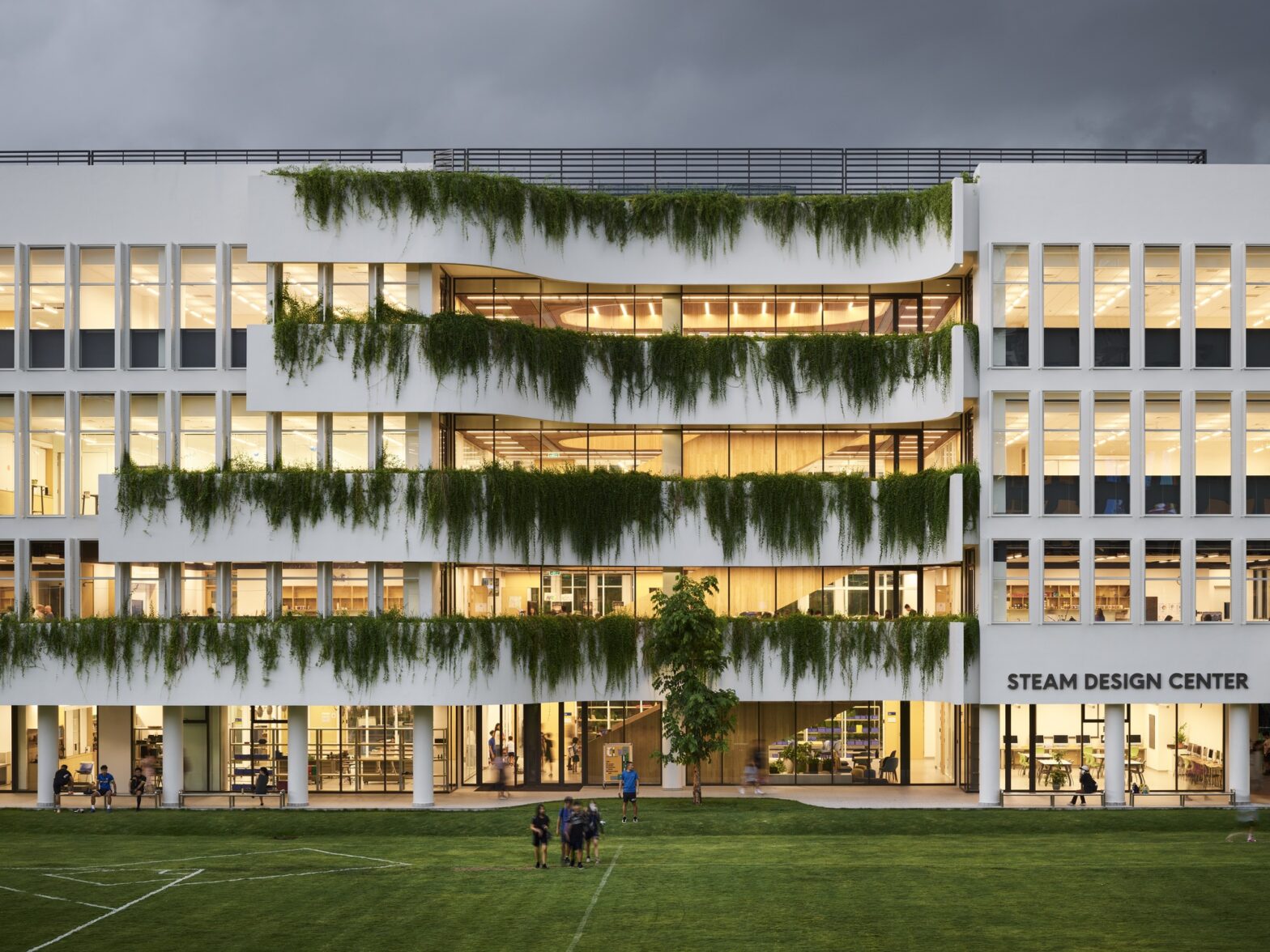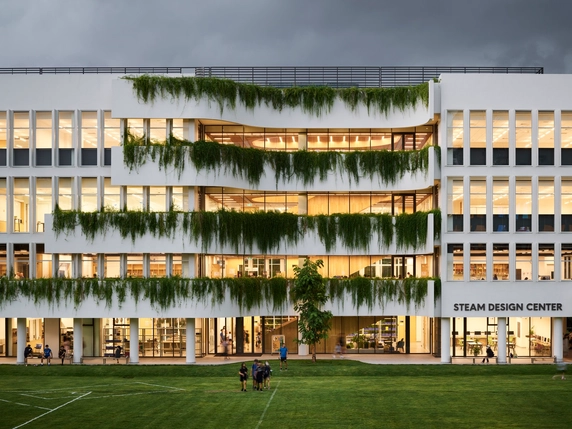
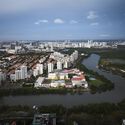
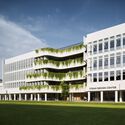

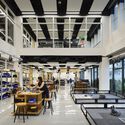

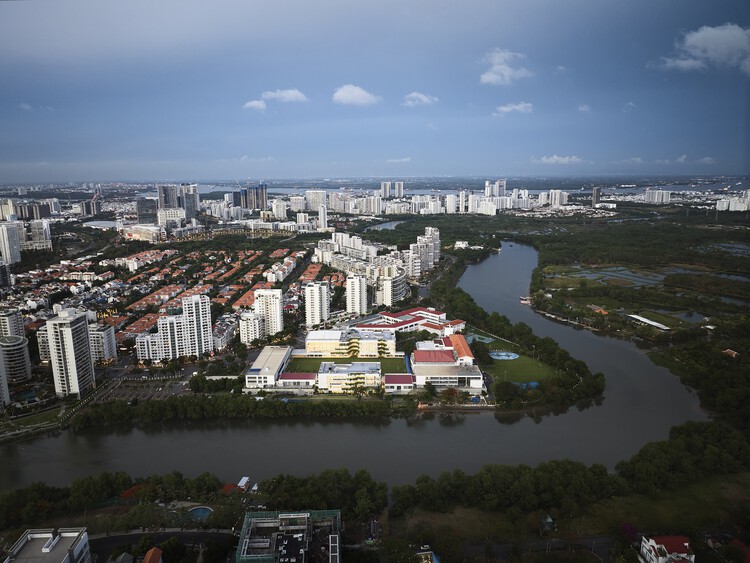
Text description of the architects. Saigon South International School is an independent college preparatory school for K-12 students from over 40 countries based on the spirit of inquiry. This project includes two new buildings, a middle school and a STEAM Design Center.
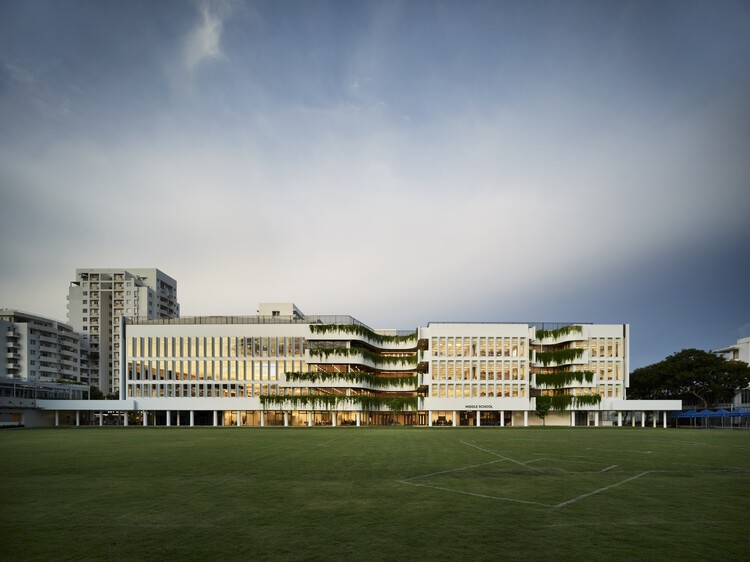
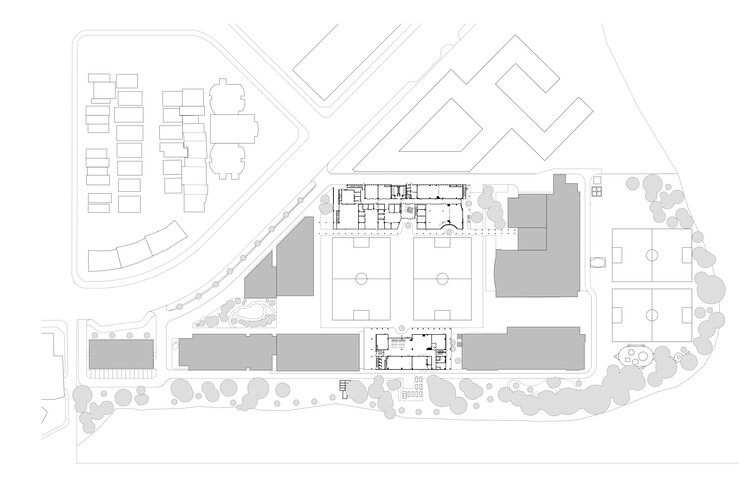
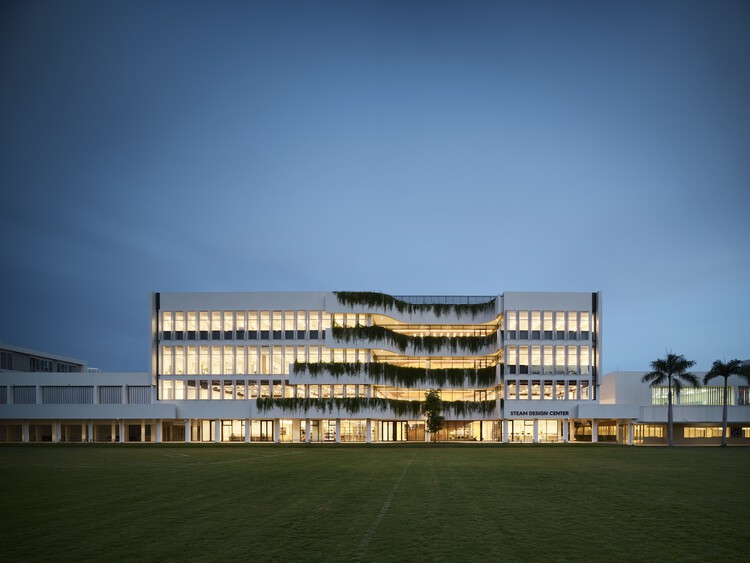
The STEAM Design Center includes five science labs, two art rooms, independent art studios, a 3D art and printmaking space, and an indoor and outdoor art gallery. The Center offers high school students the opportunity to unleash their creativity, ignite their passions and develop essential future-ready skills in a transparent, highly flexible, interdisciplinary learning environment. The middle school is designed for students in grades 6 to 8 to keep an eye on their emotional, creative and physical growth. Skylit atriums promote collaboration and a sense of belonging. Bright, daylight-filled open spaces promote practical learning and encourage students to experiment. This includes a 220 m² black box theater, dance room, classrooms, science labs, breakout rooms and maker spaces. The library is a community center for research and exploration, while the gym provides opportunities for physical activities, team sports and community-building events.
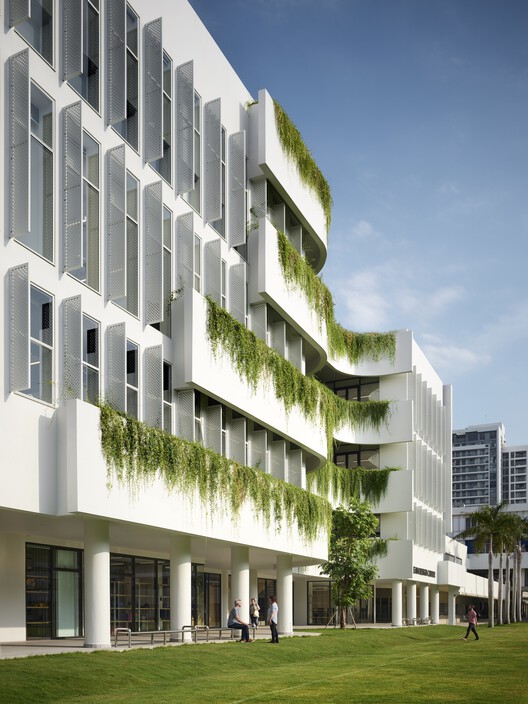
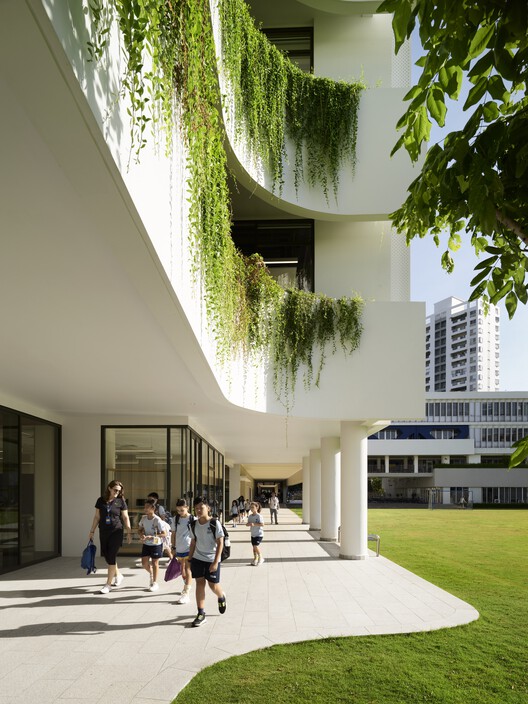
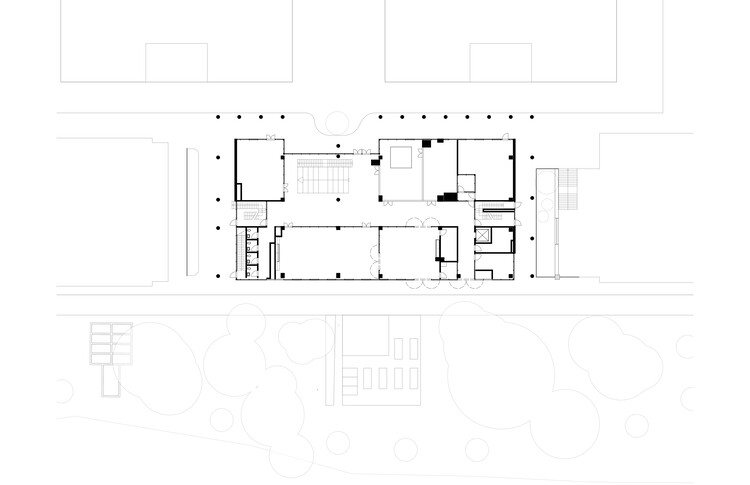
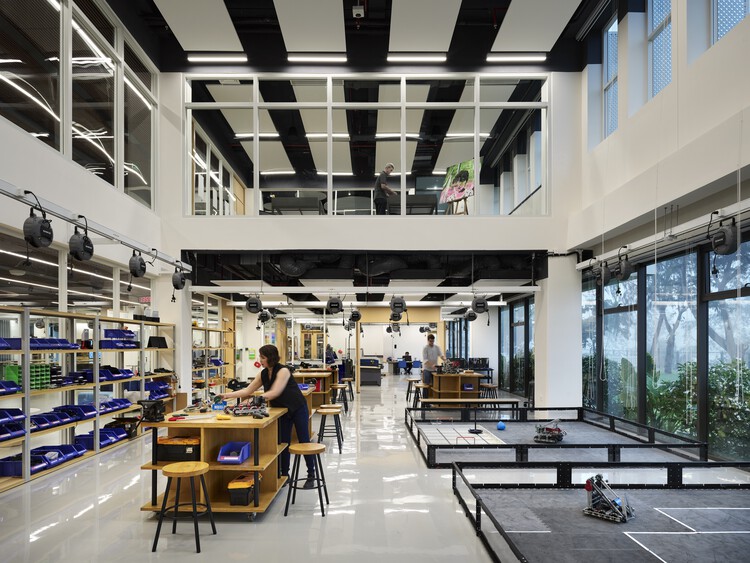
The two buildings are carefully positioned on opposite sides of an extensive sports field and green space. Its architecture is complemented by bright colors and undulating curves that harmoniously interact with its gridded structure. Planters inspired by the rice terrace fields of Sa Pa emphasize the curvature of the site, host native species, provide visual interest, and break up the building level. The dynamic interaction of these elements is enhanced when wind or rain brings movement to the lush greenery. The interiors of the atriums are furnished with bamboo, which maintains a commitment to local aesthetics and sustainability and captures natural light. The building's levels serve as metaphorical branches extending to the garden's outdoor balconies and ultimately to the river, promoting a seamless connection between educational spaces and nature.
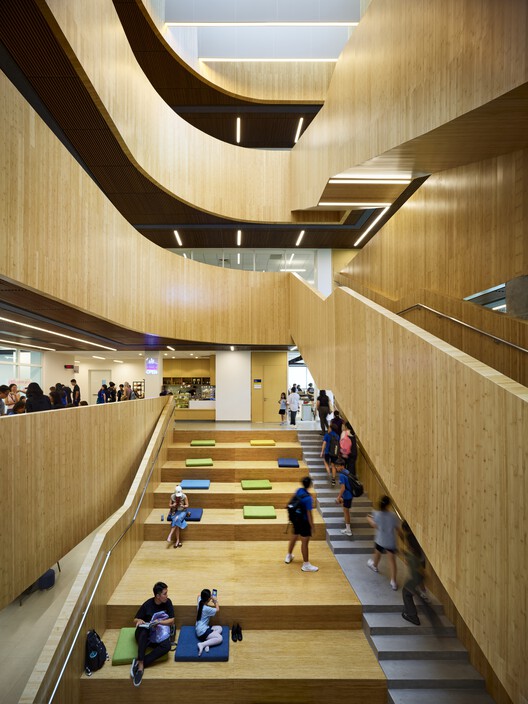
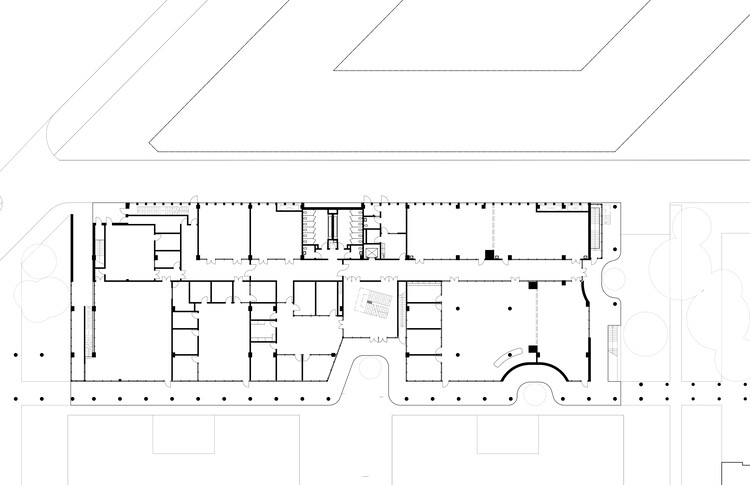
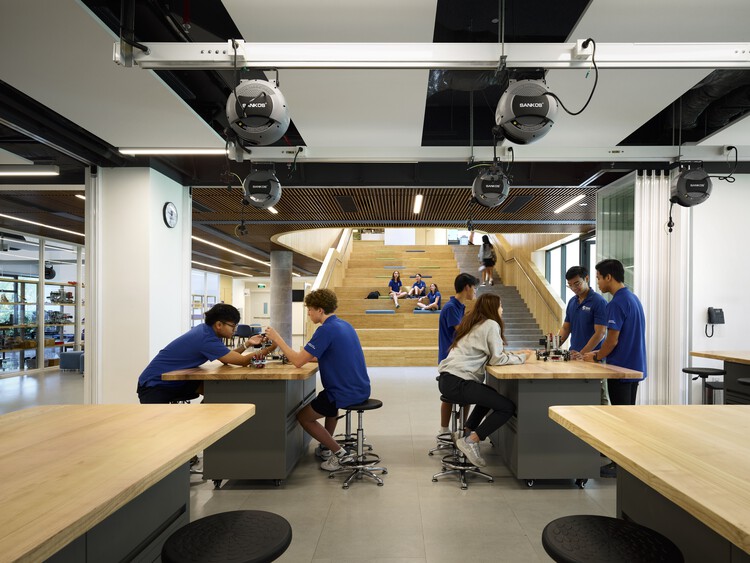
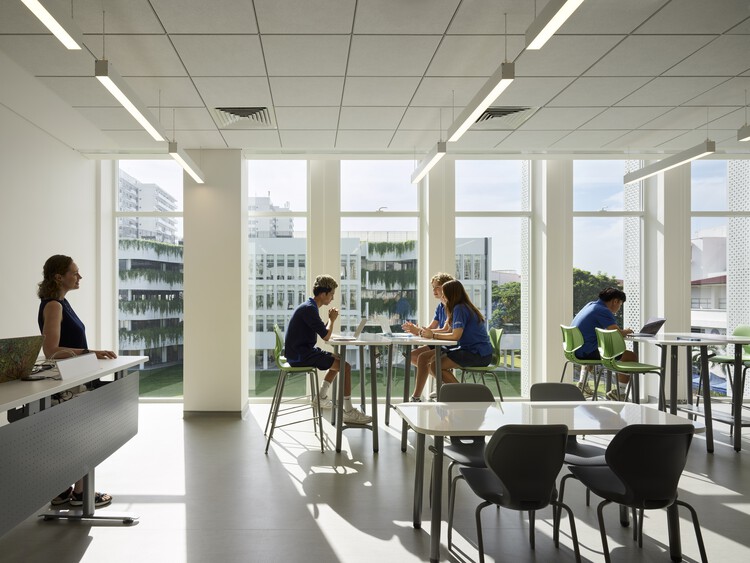
The site is part of an island city defined by existing rivers. The two buildings are located in one of five walkable, mixed-use neighborhoods on the island. The school is located along paths that extend into small blocks and are reached via a visually interesting 10-minute walk. The project's location, anchored on the Dia Canal, strengthens the sense of place, provides better visibility and is part of a larger campus that serves the entire city. The new premises benefit from their prominent location. Curved balconies that harmonize with a serpentine waterway offer water views. The two new buildings fill unused gaps between existing campus buildings to maximize a new central green space.
